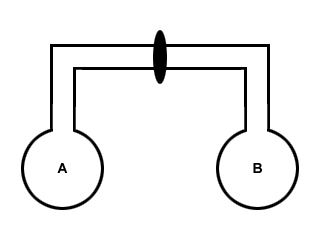Please wait while we process your payment
If you don't see it, please check your spam folder. Sometimes it can end up there.
If you don't see it, please check your spam folder. Sometimes it can end up there.
Please wait while we process your payment

By signing up you agree to our terms and privacy policy.
Don’t have an account? Subscribe now
Create Your Account
Sign up for your FREE 7-day trial
By signing up you agree to our terms and privacy policy.
Already have an account? Log in
Your Email
Choose Your Plan
Individual
Group Discount
Save over 50% with a SparkNotes PLUS Annual Plan!
 payment page
payment page
Purchasing SparkNotes PLUS for a group?
Get Annual Plans at a discount when you buy 2 or more!
Price
$24.99 $18.74 /subscription + tax
Subtotal $37.48 + tax
Save 25% on 2-49 accounts
Save 30% on 50-99 accounts
Want 100 or more? Contact us for a customized plan.
 payment page
payment page
Your Plan
Payment Details
Payment Summary
SparkNotes Plus
You'll be billed after your free trial ends.
7-Day Free Trial
Not Applicable
Renews July 9, 2025 July 2, 2025
Discounts (applied to next billing)
DUE NOW
US $0.00
SNPLUSROCKS20 | 20% Discount
This is not a valid promo code.
Discount Code (one code per order)
SparkNotes PLUS Annual Plan - Group Discount
Qty: 00
SparkNotes Plus subscription is $4.99/month or $24.99/year as selected above. The free trial period is the first 7 days of your subscription. TO CANCEL YOUR SUBSCRIPTION AND AVOID BEING CHARGED, YOU MUST CANCEL BEFORE THE END OF THE FREE TRIAL PERIOD. You may cancel your subscription on your Subscription and Billing page or contact Customer Support at custserv@bn.com. Your subscription will continue automatically once the free trial period is over. Free trial is available to new customers only.
Choose Your Plan
This site is protected by reCAPTCHA and the Google Privacy Policy and Terms of Service apply.
For the next 7 days, you'll have access to awesome PLUS stuff like AP English test prep, No Fear Shakespeare translations and audio, a note-taking tool, personalized dashboard, & much more!
You’ve successfully purchased a group discount. Your group members can use the joining link below to redeem their group membership. You'll also receive an email with the link.
Members will be prompted to log in or create an account to redeem their group membership.
Thanks for creating a SparkNotes account! Continue to start your free trial.
We're sorry, we could not create your account. SparkNotes PLUS is not available in your country. See what countries we’re in.
There was an error creating your account. Please check your payment details and try again.
Please wait while we process your payment

Your PLUS subscription has expired
Please wait while we process your payment
Please wait while we process your payment

Problems 3
Problem : What is the density of carbon dioxide at 298 K and 1.0 atm?
Use the equation for gas density:d =  = =  |
 . If we use the value of R0.0821
. If we use the value of R0.0821  we can stick with the original
units. Plugging in these values, we find that the density d of CO2 is 1.8
g/L.
we can stick with the original
units. Plugging in these values, we find that the density d of CO2 is 1.8
g/L.
Problem : 10 L of an unknown gas has a mass of 10.8 grams at a temperature of 310 K and 1.2 atm. What is the molar mass of the gas?
Rearrange the gas density equation above to solve for μ:μ =  |
 we can avoid
converting units. The density d is the mass of the gas divided by the volume.
Plugging in values, we find that the molar mass μ is 23 grams per
mole.
we can avoid
converting units. The density d is the mass of the gas divided by the volume.
Plugging in values, we find that the molar mass μ is 23 grams per
mole.
Problem : A syringe of 0.010 mol O2 and a syringe of 0.060 mol H2 are forcibly injected into an evacuated glass jar of volume 1.0 L and temperature 273 K. What is the total pressure, and what are the partial pressures, of O2 and H2?
There are 0.010 + 0.060 = 0.070 mol of gas in the jar. Since we know volume
and temperature, we can rearrange PV = nRT to find the total pressure. Using
the value R = 0.0821  , we find that
Ptot = 1.6 atm.
, we find that
Ptot = 1.6 atm.
To solve for the partial pressures of each gas, we use Charles' law. The mole fraction of O2 is 0.010/0.070 = 0.14, so the partial pressure of O2 is 14% of the total pressure, or 0.23 atm. Likewise, the mole fraction of H2 is 0.060/0.070 = 0.86, so the partial pressure of H2 is 1.4 atm.
Alternatively, you could have found the partial pressures directly and summed them to find the total pressure. Try both ways to see which works best for you.
Problem :

| Pa2 | = |  | |
| = |  | ||
| = |  | ||
| = | 1.0×105 Pa |
 = 1/2 for both gases. A similar calculation for gas B gives
Pb2 = 0.50×105 Pa.
= 1/2 for both gases. A similar calculation for gas B gives
Pb2 = 0.50×105 Pa.
Please wait while we process your payment

